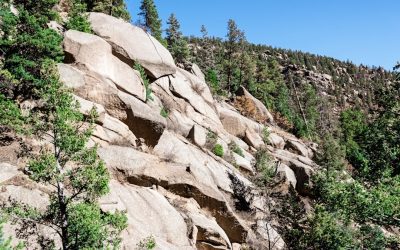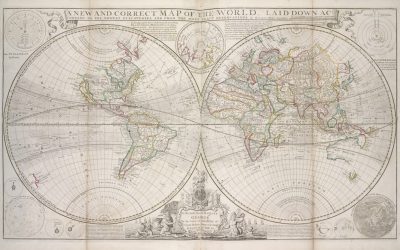Explore the World Through Geography, Natural Resources & Daily History
Clear, reliable and engaging guides that help you understand our planet — from UK geography education to global natural resources and On This Day history events.
Explore, discover, and learn about the wonders of our world! At Earth Site, we’re passionate about bringing geography, history, and science to life for curious minds of all ages. Whether you’re delving into historical events, uncovering the mysteries of the natural world, or seeking interactive resources, you’re in the right place.
Here, you can uncover the stories behind historical events, explore the natural wonders of our planet, and gain valuable insights into how the Earth’s systems shape our daily lives. From the towering peaks of mountain ranges to the far-reaching impacts of human innovation, we aim to make every topic both engaging and informative.
Start your journey of discovery with us today, and let’s make learning an adventure!
What We Cover
Earth Site brings together engaging and accessible educational content designed to help you understand the world, its history, and its natural systems.
🌍 Geography Education (UK & Worldwide)
We publish clear, easy-to-understand geography resources for students, teachers and curious learners. Our guides support geography education in the UK and cover physical geography, climate, ecosystems, population, and global development.
⛏️ Natural Resources & Environmental Geography
Explore detailed country profiles covering natural resources, mining, energy, geology and global environmental challenges. We show how nations manage minerals, water, land and ecosystems, and why these resources matter.
📅 On This Day in History
Every day has a story. Our On This Day history series features major events, anniversaries, traditions, and cultural milestones from around the world — with timelines, context, and fun facts.
TIMELINE
Environmental Policy and Advocacy
Environmental policy and advocacy have emerged as critical components in the global discourse surrounding sustainability and ecological preservation. As the world grapples with the consequences of climate change, biodiversity loss, and pollution, the need for robust environmental policies has never been more pressing. Environmental policy refers to the principles and regulations that govern human interaction with the natural world, aiming to mitigate adverse impacts and promote sustainable practices. Advocacy, on the other hand, encompasses the efforts of individuals and organisations to influence these policies, ensuring that environmental concerns are prioritised in governmental agendas and public consciousness. Together, these elements form a dynamic interplay that shapes our collective response to environmental challenges. The significance of environmental policy and advocacy cannot be overstated, as they serve as the backbone for legislative frameworks that protect ecosystems and promote sustainable development. In an era marked by rapid industrialisation and urbanisation, the delicate balance between economic growth and environmental stewardship is increasingly threatened. Advocacy plays a pivotal role in raising awareness about these issues, mobilising communities, and fostering a sense of responsibility towards the planet. By engaging in dialogue with policymakers, advocating for scientific research, and promoting grassroots movements, advocates can drive meaningful change that resonates at local, national, and global levels. The intersection of policy and advocacy thus becomes a powerful arena for addressing the pressing environmental crises of our time. Summary Environmental policy and advocacy play a crucial role in shaping laws and regulations that protect the environment. Environmental advocacy is important for raising awareness, influencing decision-makers, and mobilising public support for environmental issues. Key players in environmental policy and advocacy include...
Islands That Are Divided Between Two Countries
Divided islands are a fascinating phenomenon in the realm of geopolitics, representing not only geographical anomalies but also complex narratives of history, culture, and identity. These islands, often split between two or more nations, serve as poignant reminders of the intricate relationships that exist between land and sovereignty. The very notion of an island, typically associated with isolation and unity, becomes paradoxical when it is partitioned, leading to a myriad of implications for the inhabitants and the nations involved. The division of these islands can stem from various factors, including colonial legacies, wars, and treaties, each contributing to the unique tapestry of their current status. The significance of divided islands extends beyond mere territorial disputes; they encapsulate the struggles of identity and belonging for the people who inhabit them. The cultural and social fabric of these islands is often woven from diverse threads, reflecting the influences of different nations and peoples. As such, divided islands become microcosms of larger geopolitical tensions, where local populations navigate their identities amidst competing national narratives. This article delves into the historical background, political disputes, and socio-economic implications of divided islands, shedding light on the complexities that arise from their bifurcated nature. Summary Divided islands are geographical areas that are split between two or more countries, leading to political, territorial, and social disputes. Historical background of divided islands often involves colonialism, border disputes, and geopolitical tensions between neighbouring countries. Political and territorial disputes over divided islands can lead to military standoffs, diplomatic tensions, and international intervention. The local population living on divided islands often face challenges such as restricted movement, limited access to resources,...
The Role of Satellites in Modern Mapping
Satellite mapping has emerged as a transformative force in the way we perceive and interact with our planet. This sophisticated technology utilises satellites orbiting the Earth to capture high-resolution images and data, which are then processed to create detailed maps. These maps serve a multitude of purposes, from urban planning and agriculture to environmental monitoring and disaster response. The ability to view the Earth from above provides a unique perspective that is invaluable for researchers, policymakers, and the general public alike. As we delve deeper into the intricacies of satellite mapping, it becomes evident that this technology is not merely a tool for navigation but a vital component in understanding and managing our world. The significance of satellite mapping extends beyond its immediate applications; it represents a paradigm shift in how we gather and analyse geographical information. Traditional mapping methods, reliant on ground surveys and aerial photography, often proved time-consuming and limited in scope. In contrast, satellite mapping offers a comprehensive view that can cover vast areas in a fraction of the time. This capability has revolutionised various fields, enabling more informed decision-making and fostering a greater awareness of global issues. As we explore the evolution of satellite technology in mapping, we will uncover the remarkable advancements that have shaped this field and the profound implications they hold for society. Summary Satellite mapping is the process of using satellite imagery to create maps and gather geographical information. Satellite technology has evolved from simple photographic imaging to advanced remote sensing techniques, allowing for more accurate and detailed mapping. The advantages of using satellites for mapping include global coverage, high-resolution imagery,...
What Is Remote Sensing and How Is It Used in Geography?
Remote sensing has emerged as a pivotal tool in the modern scientific landscape, revolutionising the way we perceive and interact with our environment. At its core, remote sensing refers to the acquisition of information about an object or phenomenon without making physical contact. This technology harnesses various forms of electromagnetic radiation, including visible light, infrared, and microwave signals, to gather data from a distance. The evolution of remote sensing has been significantly influenced by advancements in satellite technology, aerial photography, and sensor development, enabling researchers and practitioners to monitor and analyse vast areas of land and water with unprecedented precision. As we grapple with pressing global challenges such as climate change, urbanisation, and resource management, the role of remote sensing becomes increasingly critical in providing insights that inform decision-making processes. The significance of remote sensing extends beyond mere data collection; it encompasses a comprehensive framework for understanding complex geographical phenomena. By integrating remote sensing data with geographic information systems (GIS), analysts can create detailed spatial models that elucidate patterns and trends across diverse landscapes. This synergy between remote sensing and GIS facilitates a deeper understanding of environmental dynamics, socio-economic factors, and human interactions with the natural world. As we delve into the principles and technologies underpinning remote sensing, it becomes evident that this field is not only a testament to human ingenuity but also a vital component in our quest for sustainable development and effective resource management. Summary Remote sensing is the science of obtaining information about objects or areas from a distance, typically from aircraft or satellites. The principles and technology of remote sensing involve the use of...
Geographic Information Systems (GIS): What They Are and How They Work
Geographic Information Systems (GIS) have emerged as a pivotal technology in the modern world, revolutionising the way we understand and interact with spatial data. At its core, GIS is a framework for gathering, managing, and analysing data rooted in the geographic context. This technology integrates various forms of data, including maps, satellite imagery, and demographic information, allowing users to visualise and interpret complex relationships between different variables. The significance of GIS extends beyond mere mapping; it serves as a powerful tool for decision-making across numerous sectors, from urban planning to environmental management. As the world becomes increasingly data-driven, the role of GIS in facilitating informed decisions based on spatial analysis cannot be overstated. The evolution of GIS has been remarkable, transitioning from rudimentary mapping techniques to sophisticated systems that harness the power of big data and advanced analytics. Initially developed for cartographic purposes, GIS has expanded its capabilities to include real-time data processing and predictive modelling. This transformation has been fuelled by technological advancements such as cloud computing, artificial intelligence, and the Internet of Things (IoT), which have enhanced the accessibility and functionality of GIS platforms. As a result, organisations can now leverage GIS to address complex challenges, optimise resource allocation, and improve service delivery. The growing recognition of the importance of spatial data in various fields underscores the need for a deeper understanding of GIS and its multifaceted applications. Summary GIS is a powerful tool for capturing, storing, analyzing, and managing geographic data Components of GIS include hardware, software, data, and people, and its functions include data input, manipulation, analysis, and output Data collection in GIS involves gathering...
Map Projections: How Maps Distort the Earth
Map projections are essential tools in cartography, serving as the bridge between the three-dimensional reality of our planet and the two-dimensional representations we use for navigation, education, and exploration. At its core, a map projection is a systematic method of transforming the curved surface of the Earth onto a flat plane. This transformation is not merely a technical challenge; it embodies a complex interplay of mathematics, geography, and artistic interpretation. The Earth, being an oblate spheroid, presents unique challenges for cartographers who strive to depict its features accurately while maintaining usability for various applications. Understanding map projections requires an appreciation of the underlying principles that govern how we represent spatial relationships and geographical features. The significance of map projections extends beyond mere aesthetics; they influence how we perceive the world around us. Each projection offers a different perspective, highlighting certain areas while diminishing others. For instance, a projection that preserves area may distort shapes, while one that maintains shape may compromise area accuracy. This inherent trade-off is crucial for users to grasp, as it shapes their understanding of global geography. Furthermore, the choice of projection can reflect cultural and political biases, subtly influencing how regions are viewed and understood. Thus, delving into the realm of map projections is not just an academic exercise; it is an exploration of how we interpret and interact with our world. Summary Map projections are methods used to represent the 3D surface of the earth on a 2D map. There are various types of map projections, each with its own set of advantages and disadvantages. Distortions in map projections can occur in terms of...
Smart city planning for environmental sustainability
In an era marked by rapid urbanisation and the pressing challenges of climate change, the concept of smart city planning has emerged as a beacon of hope for sustainable urban development. Smart city planning refers to the integration of technology, data, and innovative practices to enhance the quality of life for residents while promoting environmental sustainability. This multifaceted approach seeks to address the myriad issues faced by modern cities, including traffic congestion, pollution, and inadequate public services. By leveraging advanced technologies such as the Internet of Things (IoT), big data analytics, and artificial intelligence, urban planners can create more efficient, responsive, and resilient urban environments that cater to the needs of their inhabitants. The significance of smart city planning extends beyond mere technological advancement; it embodies a holistic vision for urban living that prioritises sustainability and inclusivity. As cities continue to grow, the demand for resources intensifies, leading to increased pressure on infrastructure and natural ecosystems. Smart city initiatives aim to mitigate these pressures by fostering a collaborative approach among stakeholders, including government agencies, private enterprises, and local communities. This collaborative framework not only enhances decision-making processes but also ensures that the voices of diverse populations are heard in shaping the urban landscape. Ultimately, smart city planning represents a paradigm shift in how we conceive urban spaces, moving towards a future where technology and sustainability coexist harmoniously. Summary Smart city planning involves the use of technology and data to improve the quality of life for residents and enhance the efficiency of urban services. Environmental sustainability is crucial in urban planning to address issues such as pollution, resource depletion, and...
The Smallest Countries in the World: Geography and History
The world is a vast tapestry of nations, each with its own unique identity, culture, and history. Among these nations, a select few stand out not for their size or population, but rather for their diminutive stature. The smallest countries in the world, often overlooked in discussions about global influence and power, offer a fascinating glimpse into the complexities of nationhood. These microstates, which include the likes of Vatican City, Monaco, and Nauru, challenge conventional notions of what it means to be a country. Their limited geographical footprint belies their rich histories and vibrant cultures, making them intriguing subjects for exploration. Despite their small size, these countries often wield a surprising amount of influence on the global stage. They serve as important hubs for diplomacy, finance, and tourism, showcasing how even the tiniest nations can play significant roles in international affairs. The unique characteristics of these microstates—ranging from their governance structures to their economic models—provide valuable insights into the diverse ways in which societies can organise themselves. As we delve deeper into the geography, history, culture, and challenges faced by these small nations, we will uncover the remarkable stories that define them and highlight their contributions to the global community. Summary The smallest countries in the world are often overlooked but hold unique significance. Despite their small size, these countries boast diverse geography, from tropical islands to urban city-states. The history and culture of the smallest countries are rich and varied, influenced by their unique position in the world. Economically and politically, these countries may be small, but they often punch above their weight on the global stage. Challenges...
The Art and Science of Creating a World Map
The history of cartography is a fascinating journey that reflects humanity’s evolving understanding of the world. From the earliest days of human civilization, maps have served as essential tools for navigation, exploration, and territorial claims. The ancient Babylonians, for instance, created some of the earliest known maps on clay tablets, depicting their surroundings with a remarkable degree of accuracy for their time. These early representations were not merely practical; they were also imbued with cultural significance, often reflecting the beliefs and values of the societies that produced them. As civilisations advanced, so too did their mapping techniques. The Greeks made significant contributions to cartography, with figures like Ptolemy laying the groundwork for future mapmakers by introducing concepts such as latitude and longitude. His work, “Geographia,” compiled knowledge from various sources and established a framework that would influence cartographers for centuries. As the Middle Ages unfolded, the art of mapmaking experienced a transformation, particularly in Europe. Maps became more decorative and symbolic, often serving religious or political purposes rather than strictly geographical ones. The T-O maps of the medieval period, for example, depicted the world as a circle divided into three parts: Asia, Europe, and Africa, with Jerusalem at the centre. This representation was less about geographical accuracy and more about conveying a worldview shaped by faith and cultural narratives. The Age of Exploration in the 15th and 16th centuries marked a pivotal moment in cartography, as explorers like Columbus and Magellan ventured into uncharted territories. Their discoveries prompted a surge in map production, leading to more accurate depictions of the world. The advent of printing technology further revolutionised cartography,...
What Are Topographic Maps and How Are They Used?
Topographic maps are intricate representations of the Earth’s surface, capturing the three-dimensional features of terrain in a two-dimensional format. These maps are distinguished by their use of contour lines, which connect points of equal elevation, thereby illustrating the undulating nature of landscapes. Unlike standard road maps that primarily focus on transportation routes and urban areas, topographic maps provide a wealth of information about the physical characteristics of a region, including hills, valleys, rivers, and forests. This detailed portrayal allows users to visualise the topography of an area, making them invaluable tools for a variety of applications, from outdoor recreation to scientific research. The significance of topographic maps extends beyond mere aesthetics; they serve as essential resources for understanding geographical features and their implications on human activity. For instance, hikers and climbers rely on these maps to navigate challenging terrains, while environmental scientists utilise them to study ecosystems and landforms. The intricate details captured in topographic maps can reveal patterns in land use, hydrology, and even climate variations. As such, they are not only a reflection of the physical world but also a crucial element in the interplay between nature and human development. Summary Topographic maps are detailed representations of the Earth’s surface, showing the shape and elevation of the land. These maps are created using a combination of aerial photography, satellite imagery, and ground surveys to accurately depict the terrain. Understanding the symbols and legends on topographic maps is crucial for interpreting features such as contour lines, vegetation, water bodies, and man-made structures. Topographic maps are essential tools for geographers and cartographers, providing valuable information for land use planning,...
Understanding Latitude and Longitude
Latitude and longitude are fundamental concepts in the realm of geography, serving as the backbone of our understanding of the Earth’s surface. These two coordinates allow us to pinpoint any location on the globe with remarkable precision, facilitating navigation, mapping, and a myriad of other applications. The system of latitude and longitude is not merely a modern invention; it has evolved over centuries, drawing from the observations of ancient astronomers and navigators who sought to make sense of the vastness of the Earth. By establishing a grid that divides the planet into measurable sections, latitude and longitude provide a universal language for identifying locations, transcending linguistic and cultural barriers. The significance of latitude and longitude extends beyond mere navigation; they are integral to various fields such as meteorology, environmental science, and urban planning. For instance, understanding the geographical coordinates of a location can help in predicting weather patterns or assessing climate change impacts. Furthermore, in an increasingly globalised world, these coordinates play a crucial role in international relations, trade, and even military strategy. As we delve deeper into the intricacies of latitude and longitude, we will uncover their measurement, application in navigation, and their overarching importance in geography. Summary Latitude and longitude are geographical coordinates used to pinpoint a location on the Earth’s surface. Latitude measures the distance north or south of the equator, while longitude measures the distance east or west of the Prime Meridian. Latitude is measured in degrees, with the equator at 0° and the poles at 90°, while longitude is measured in degrees, with the Prime Meridian at 0° and the International Date Line at...
Types of Maps and Their Uses
Maps have long served as essential tools for navigation, exploration, and understanding the world around us. From ancient times, when early cartographers painstakingly sketched the contours of known lands, to the sophisticated digital maps we rely on today, the evolution of mapping has been a testament to humanity’s quest for knowledge and orientation. Maps are not merely representations of geographical spaces; they encapsulate cultural, historical, and political narratives, providing insights into how societies perceive their environment. The art and science of cartography have transformed significantly over the centuries, with advances in technology allowing for increasingly detailed and interactive representations of our planet. In contemporary society, maps are ubiquitous, appearing in various forms and serving multiple purposes. They can be found in textbooks, on smartphones, and even as decorative art pieces. The significance of maps extends beyond mere navigation; they are vital in fields such as urban planning, environmental science, and education. Understanding the different types of maps and their specific uses is crucial for anyone seeking to navigate the complexities of our world. This article will delve into various categories of maps, exploring their unique characteristics and applications, ultimately guiding readers in selecting the most appropriate map for their needs. Summary Maps are visual representations of the Earth’s surface, showing various features and information. Political maps display boundaries, cities, and countries, and are used for understanding political divisions and locations. Physical maps show natural features such as mountains, rivers, and deserts, and are used for understanding the physical landscape of an area. Topographic maps display elevation and terrain, and are used for hiking, camping, and other outdoor activities. Climate...











